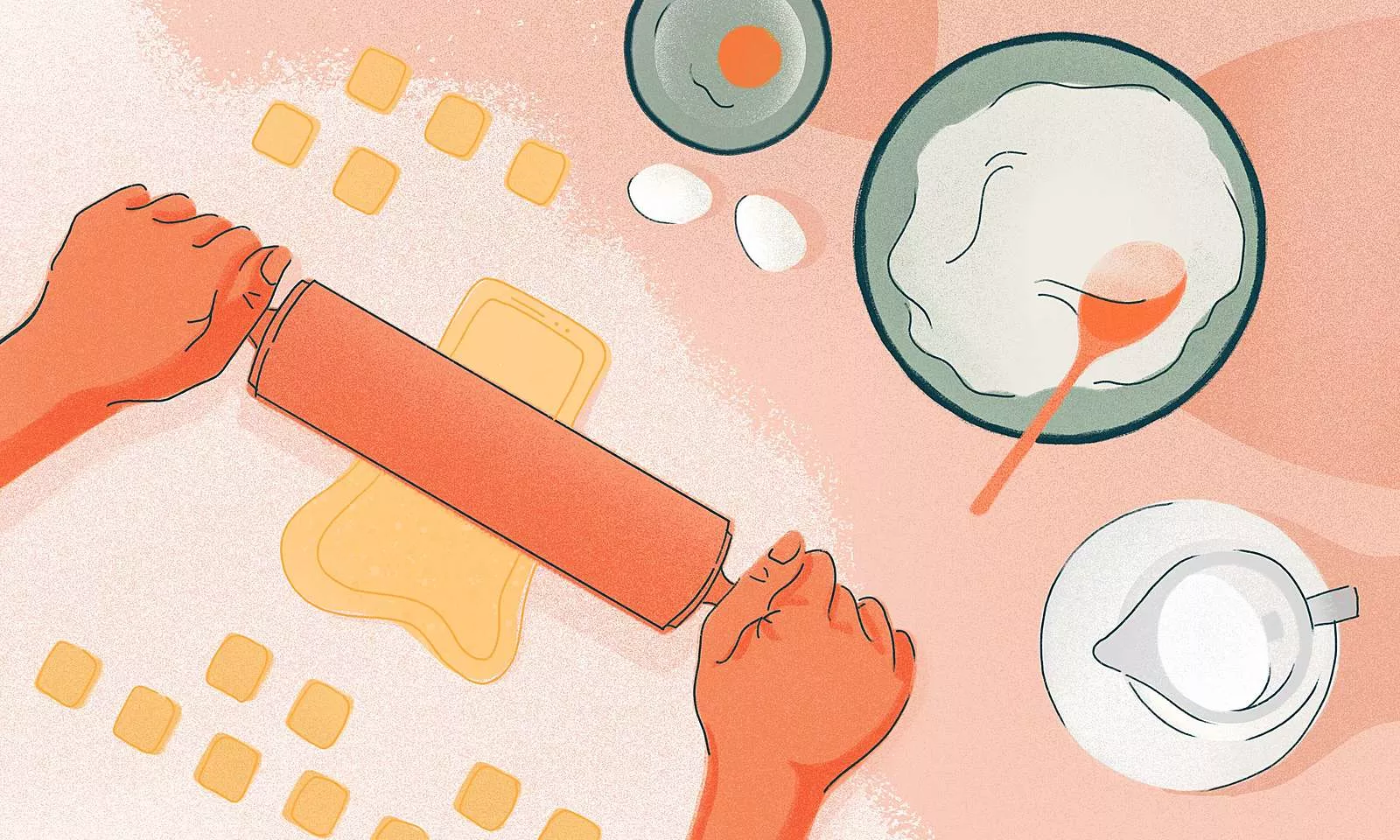Back when I moved in with my fiancé, we realized we knew how to prepare 4 meals altogether. That’s when I installed a couple of cooking apps – and uninstalled one after the other.
Why didn’t I stick with any of those apps?
There are more reasons for abandoning those apps than the number of recipes I found useful there. Long onboarding, poor content, and a lack of an efficient method to build a habit of checking back into the app are just some of them.
Anyway, after uninstalling the 5th app, it dawned on me that the problem wasn’t me. The reason why I couldn’t commit to any of those apps is that each one lacked some crucial ingredient, pun intended. Intrigued by these user experience issues, I started thinking about the opposite.
What features would make me want to use an app regularly?
I’ve thought about this from the perspective of an advanced user, as well as from a designer’s point of view. Find my user engagement tips below, sorted by the corresponding stage of user retention.

Initial and early retention stage
The first couple of weeks will make or break your app. Let’s say a bunch of users download your app, just like I did when I first started exploring cooking apps.
Now count out a quarter of users, who will abandon the app they had just installed first thing after opening it. Deduct the number of users who open the app only once in 7 days, as they are 60% likely never to open it again.
These five hooks can help keep the remaining users on board during the first couple of weeks.
1. Make onboarding intuitive
Onboarding is your chance to introduce users to the app’s finest features and teach them how to properly use it.
Make onboarding as simple as you can. Too many steps and too much information can easily confuse or overwhelm the user, thus increasing the chance of app abandonment.
On the other hand, a successfully completed onboarding will increase app retention rate by 50%.
For more info about creating onboarding success, check this article out.
2. Push & nudge users with notifications
Push notifications can be a valuable tool for increasing user retention, even by simply reminding users of the app’s existence.
However, use push notifications scarcely, as they can easily become an irritation to the user and an incentive to uninstall the app.
Furthermore, make sure that a click on the push notification lands on the corresponding screens. An example – if a notification nudges the user to check out a new recipe, clicking on it should open that recipe, not the app’s home screen. Too many apps get this wrong.
3. Content, more content, and then some more content
“What are we eating?” is the eternal question that pops up at least two times every single day. The first time is before the lunch break at work. The other one in the afternoon, when my partner inquires about dinner.
One of the prerequisites for your app’s success is an abundance of quality content.
In a cooking app, this means tons of recipes. These recipes need to contain a detailed description of the process with actionable steps; estimates of the level of preparation difficulty, cooking time, and the number of portions; nutritional facts per serving; the list of ingredients based on the intended number of servings, etc.
As far as ingredients go, think like an average user – provide recipes with simple and accessible ingredients.
Very few people have saffron, dragon fruit, and ostrich meat readily available in their local supermarket. Don’t lose users over recipes that are better suited for Top Chef than for everyday life.
4. Enable search & filtering
Luckily, for the biggest part of the developed world, food scarcity is no longer an issue. When people have options, they develop preferences. The app’s search and filtering options should mirror that.
We can’t assume what the user’s agenda is. Is the user trying to find a specific recipe, or are they trying to make use of that chicken breast they have in the fridge? Or maybe they are just exploring.
Some filtering options include filtering by cuisine and diet type, by the main ingredient, as well as by occasion and season. Btw, 11% of the world population declared themselves vegetarian in 2018. That is 825 million people potential app users, so maybe have a vegetarian filter?
5. Make using the app fun
Gamification can play a vital role in motivating users to stay for a little while longer. Think in terms of small rewards, badges, or progress indicators. Challenge users to develop a habit of cooking or preparing a variety of meals.
Whether it’s a golden star for cooking healthy 3 days in a row or a special recipe gets unlocked when they share 10 recipes, praise users, and give them something they can collect and show around.
Give them a confidence boost by tracking their progress, and you’ll witness a boost in your user retention rate.

Mid-term retention stage
If a user sticks around for week 3, congrats. But don’t congratulate yourself too much – getting them to stay for the long run is no easy feat. From personalization to technical requirements, these tips could increase your app’s chance of being a keeper.
1. Provide handsfree mode + tablet support
Cooking is not easy if you have to hold a smartphone or tablet in your hand the whole time. Leaving it on the desk is not the greatest solution either, considering you’ll have to scroll up and down every other minute, the text being super tiny from 1 m away, plus it is a hygiene problem altogether.
But without a competitive 3rd screen on the market, the tablet wins as the preferred cooking screen. My advice is to create some kind of a presentation mode in the app which would guide users through the recipe one step at a time – and feature a large font. We’re not getting any younger, are we?
2. Personalization is key
The more unique an experience for the user you create, the more likely it is that they will continue using your app.
Give users the possibility to select preferred ingredients and those he or she wants to avoid – then remove those recipes entirely. Or track when a user usually opens the app. If they miss a day, send a push notification to gently nudge the user to keep a regular eating schedule.
You could also implement a progress-tracking mechanism to encourage users at a time when motivation is scarce.
3. Make it social
On the days we feel uninspired, humans tend to look for inspiration where the grass is greener. Translate this to the culinary context, and recipes with the most views or likes might be a good choice to prepare on the non-creative days in the kitchen, while comments by other app users could provide solutions to frequent prepping struggles.
Lastly, remember that even in the offline world, cooking is a purely social activity. Consider enabling photo upload and rating mechanism, which allows young chefs to boast about their skills or rate the skills of others.

Long-term retention stage
While 71% of all app users churn within 90 days across all industries (bad news), Travel & Lifestyle apps retain the most users on average, with a 29% retention rate within 90 days (sort-of-good news).
But to really stay loyal to an app in the long-term, users need recurring long-term value and an occasional surprise. These 3 tips could help.
1. Provide value-added content
In this phase, users already know how to prepare more than a couple of meals. They might even want to start planning their meals on a weekly basis or they could try to learn more about the nutritional aspect of food.
Searching for recipe collections based on macros, prep time, or specific half-of-the-week or full-week prep recipes are all potential reasons why users might leave your app to look for information elsewhere.
Provide added value content in-app and users will have no reason to look further.
Groceries lists are similar – give users the space to create shopping lists from inside the cooking app and encourage them to spend a little longer there without the need for complicated features.
2. Ask for feedback
Never underestimate getting feedback and improvement suggestions from end-users. Not only does it help you gain a clearer picture of where your development should be headed, but it’s also a great way to prevent getting negative reviews in app stores.
With two-way communication, you are showing that you listen and care, thus organically encouraging positive reviews.
3. Implement a learning algorithm
This is actually an advanced recommendation system that learns on the go. It collects data from user actions (clicks, likes, filters, etc.) and as a result serves personalized recommendations.
Theoretically, if at some point you decide to ditch meat and increase your vegetable intake, the app would recognize that pattern and recommend more leafy meals. Does this really work? Our Machine Learning team tested it and explained how it works.
Motivate users to use it if you don’t want to lose it
They say that love goes through the stomach. Since the girlfriend from the beginning of the story turned into a wife during the period in which I didn’t master cooking, that’s obviously not true. But in order to stay a happily married man, I still need to learn how to cook, so I’m eager to try out any new cooking apps on the market.
To anyone creating such an app, I’ve tried to list as many tips as I could think of to improve user retention in your cooking app. I highly advise you to consider these tips when designing user experience unless you want users to drop your app at the pace they drop their New Year’s resolutions to eat more veggies.










